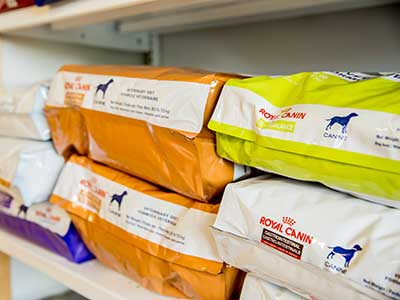 The internet is a wonderful, modern resource for many things. Unfortunately, it can also be a font of misinformation and misleading ideas. At our hospital, we frequently see clients spending unnecessary funds, accidentally compromising the health of their pets and heeding advice that is simply wrong, all because Dr. Google said it was true.
The internet is a wonderful, modern resource for many things. Unfortunately, it can also be a font of misinformation and misleading ideas. At our hospital, we frequently see clients spending unnecessary funds, accidentally compromising the health of their pets and heeding advice that is simply wrong, all because Dr. Google said it was true.
Here are a few simple, practical tips for feeding your pet.
First, take a look at your dog’s bowl. Plastic bowls can be a source of skin allergens. Stainless steel is economical, dishwasher-safe and allergen free. If your dog is a gulper or super-fast eater, try a bowl with a three dimensional bottom so he has to work around the objects and eat more slowly.
In the United States, over 50% of dogs and cats are obese. As much as we wish otherwise, weight loss, excluding certain metabolic disorders, is simple: fewer calories in, more calories out. Your veterinarian can provide you with a daily calorie goal tailored to your dog’s lifestyle. Many people also fail to measure portions. A traditional measuring cup is an easy way to control your dog’s weight. As for treats….remember that a treat has a more significant effect on a Chihuahua than it does on a Labrador. Everything in moderation.
There is a trend in the pet food industry towards grain-free diets. We will address this issue in more depth in a future blog post, but here are a few facts to keep in mind. In almost every case, food allergies are caused by animal protein sources such as beef, chicken or salmon. Grains are a good source of nutrients-consider what they’re replaced with in “grain-free” diets: starches with little to no nutritional value. Finally, stop focusing on the ingredient list! This list does not mean quality nor quantity. It’s far more important to look for the Association of American Feed Control Officials (AAFCO) endorsement on the bag, ensuring quality control.
As always, we want what’s best for your pet, and are always glad to provide nutritional consults from licensed veterinarians.
Recent Comments